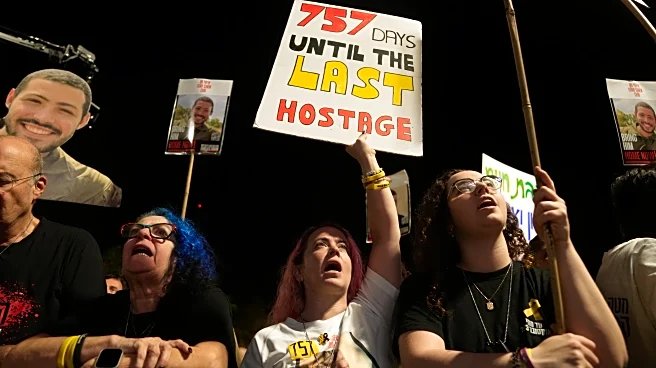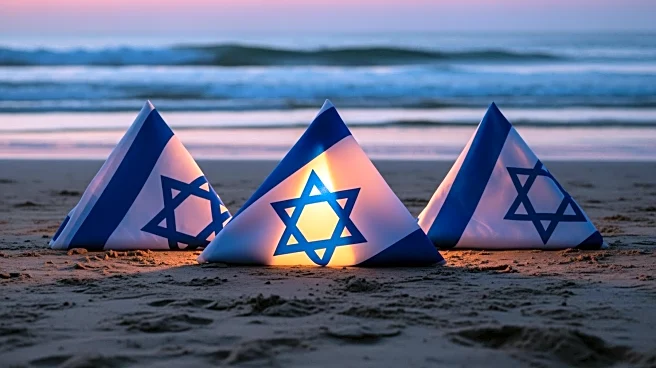What's Happening?
Israel has handed over the bodies of 45 Palestinians following the return of the remains of three Israeli soldiers by Hamas. This exchange is part of a U.S.-brokered ceasefire aimed at ending the ongoing conflict between Israel and Hamas. Since the ceasefire began
on October 10, Palestinian militants have released the remains of 20 hostages, with eight still remaining in Gaza. For each Israeli hostage returned, Israel has been releasing the remains of 15 Palestinians, totaling 270 Palestinian bodies returned since the ceasefire's inception. The identification process in Gaza is slow due to a lack of DNA testing kits, complicating efforts to identify the returned bodies.
Why It's Important?
The exchange of remains is a significant step in the fragile ceasefire process, highlighting ongoing diplomatic efforts to stabilize the region. The involvement of the U.S. in brokering the ceasefire underscores its role in Middle Eastern peace processes. The return of remains is crucial for the families involved, providing closure and the opportunity for proper burials. However, the slow identification process in Gaza due to limited resources highlights the humanitarian challenges faced in the region. The ceasefire and exchanges could pave the way for further negotiations and potential long-term peace solutions.
What's Next?
The continuation of the ceasefire and further exchanges of remains are expected, with ongoing diplomatic efforts to solidify peace. The U.S. and other international stakeholders may continue to play a role in facilitating dialogue between the parties. Humanitarian aid and resources for identification processes in Gaza may be increased to address current challenges. The political landscape in Israel may also be affected, as public opinion and political pressure could influence future government actions regarding the conflict.














